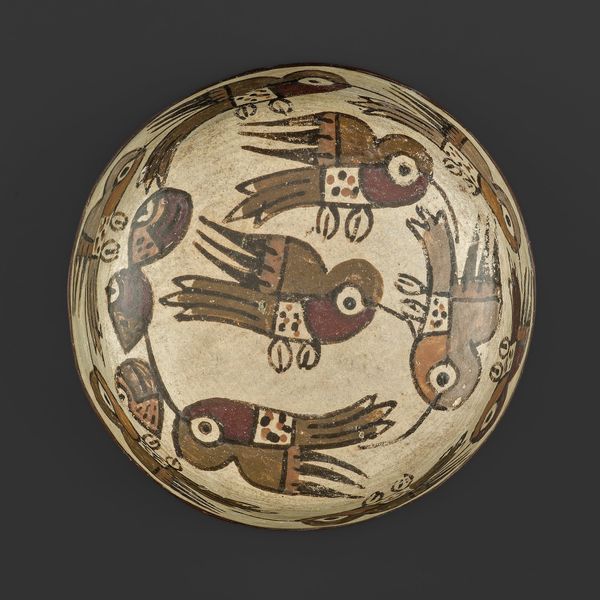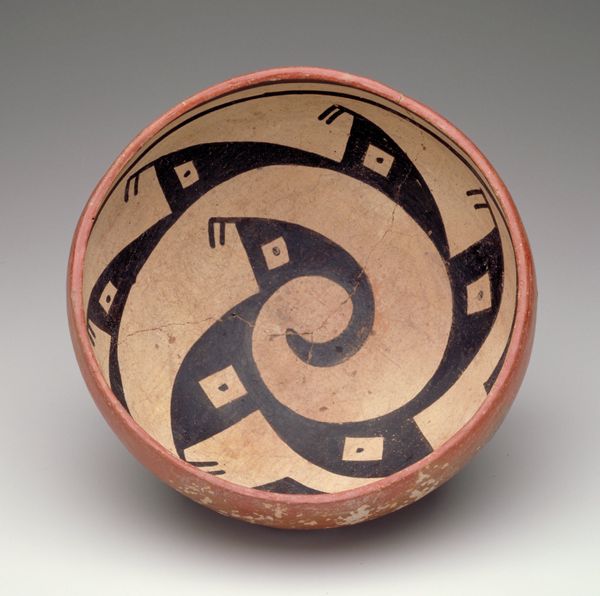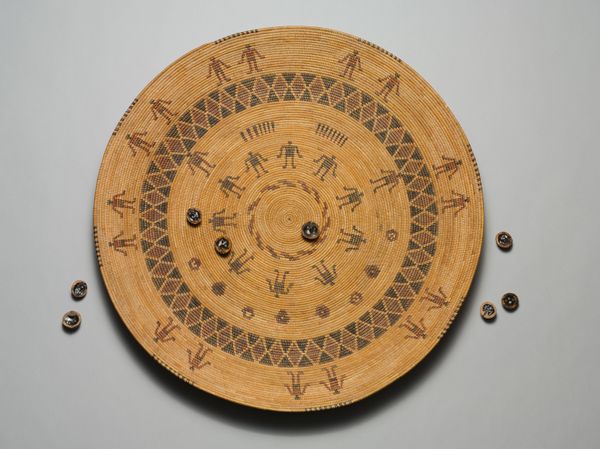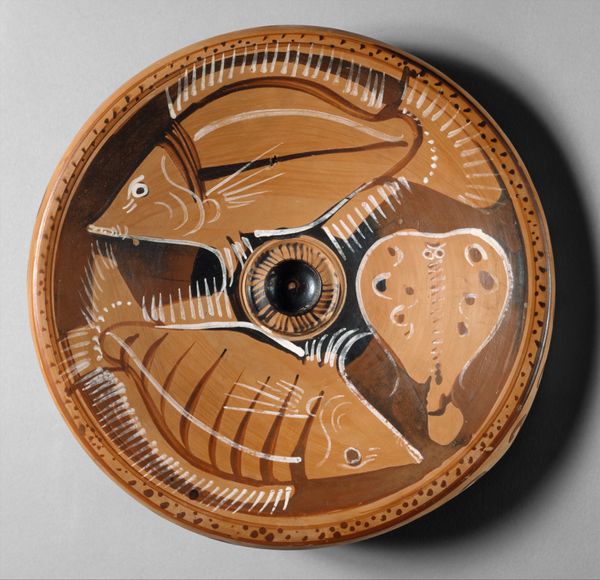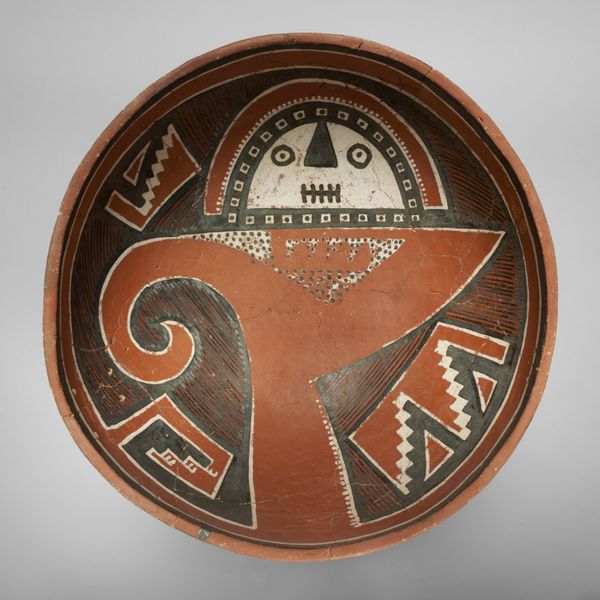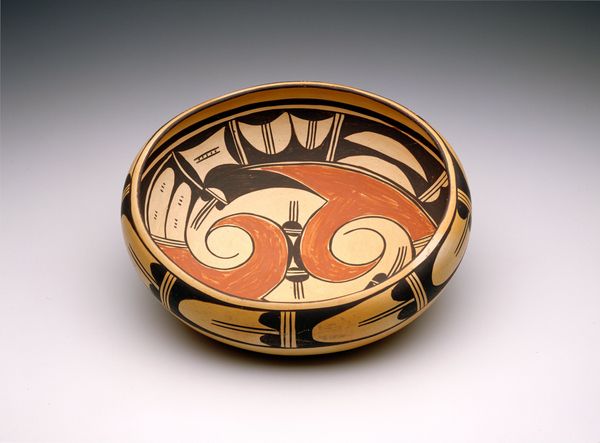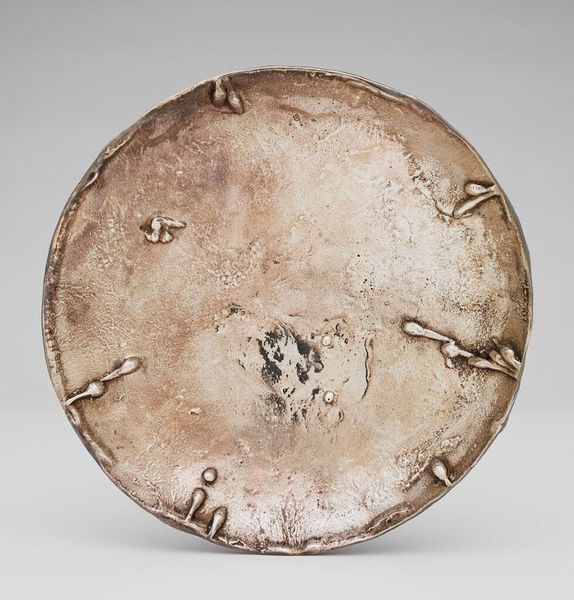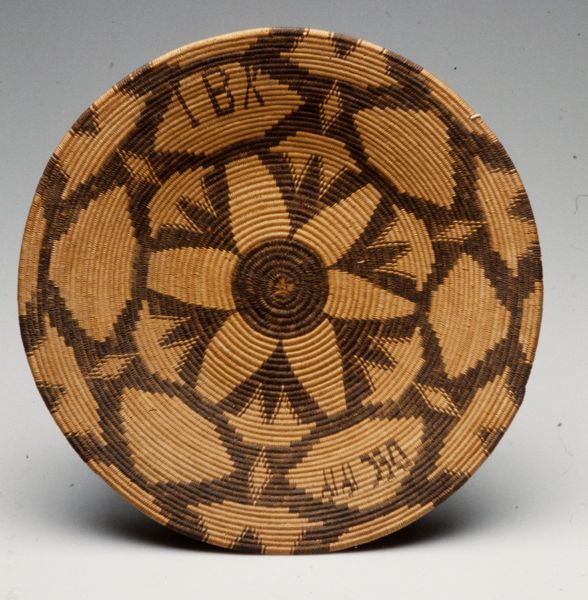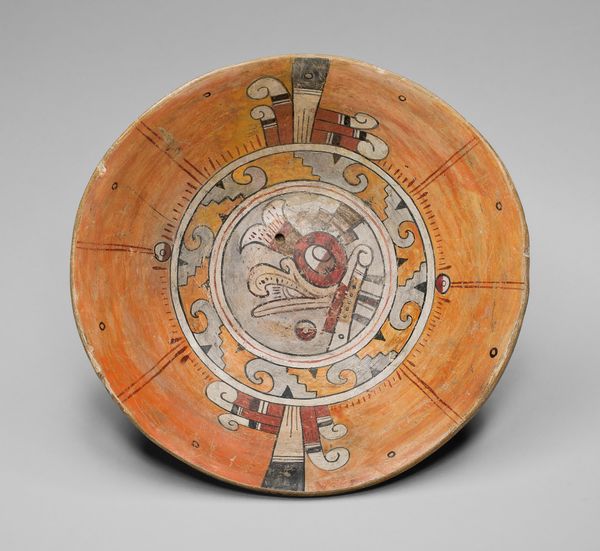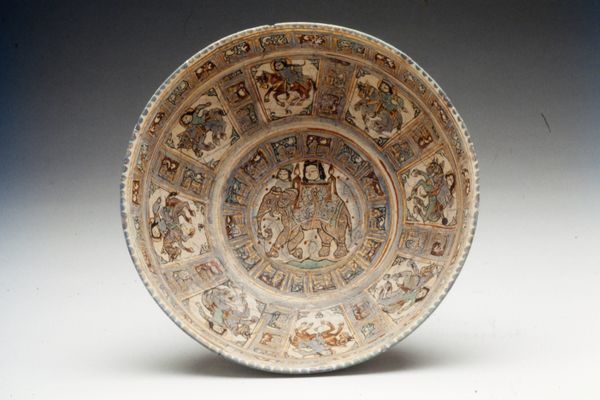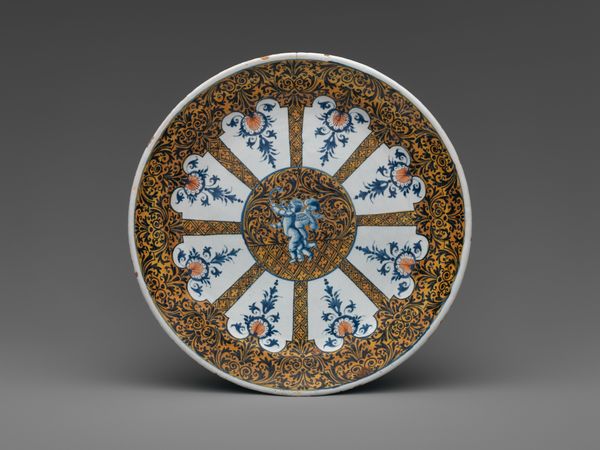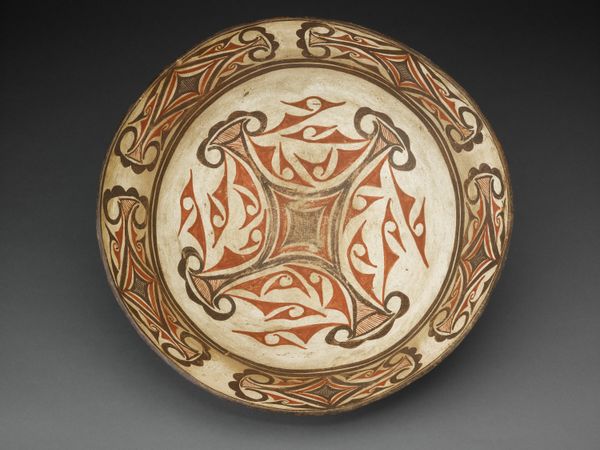
ceramic, earthenware
#
ceramic
#
earthenware
#
geometric
#
ceramic
#
abstraction
#
islamic-art
#
decorative-art
Dimensions: 5 3/16 x 12 7/8 x 12 7/8 in. (13.18 x 32.7 x 32.7 cm)
Copyright: Public Domain
This large bowl features Kufic script and palmette motifs in an elegant, symmetrical design. The Kufic script, an early form of Arabic calligraphy, often conveys religious or moral messages, while the palmette, a stylized palm leaf, symbolizes victory and fertility, rooted in ancient Near Eastern traditions. Consider the palmette: it appears across millennia, from ancient Egyptian friezes to Renaissance ornamentations. We see it in the Tree of Life motifs of Mesopotamia, and its echoes reverberate even in the acanthus leaves adorning Greek columns. The symbol transcends mere decoration, becoming a vessel for subconscious desires—a yearning for prosperity, triumph over adversity, and the cyclical renewal of life. The bowl engages us on a deeply resonant level. Its design, a visual echo of humanity's enduring aspirations, evokes a sense of continuity, revealing how ancient symbols continue to shape our aesthetic and emotional landscape. These motifs, passed down through generations, resurface and evolve, demonstrating the cyclical progression of symbols, taking on new meanings across different historical contexts.
Comments
minneapolisinstituteofart almost 2 years ago
⋮
Notable for its size, this steep bowl features inner walls with leaf-shaped palmettes united by a narrow, highly abstract mock-Kufic inscription. Two bands of Kufic script in gold appear opposite each other on the rim. Small brown and reddish-brown roundels are positioned between the palmettes and the gold inscriptions animating the overall design. The texts in this group of bowls are usually brief Kufic inscription espousing Islamic virtues such as charity, modesty, and personal perfection. The writings can also wish blessings on the owner. Polychrome ware featuring opposed palmettes, opposed Arabic inscriptions, and slip-incised patterns like those here, were very popular across central Asia during the 10th and 11th centuries.
Join the conversation
Join millions of artists and users on Artera today and experience the ultimate creative platform.

